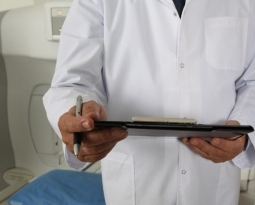The Smart Move: Make Temporary Tax Credits Permanent
There is one important tax credit which can be of great benefit to corporations, manufacturers and research laboratories. It is generally known as the US Research and Development Tax Credit and it has been on the books since 1981, with a major revision occurring in 2003. While it is intended to stimulate research and development across a broad range of verticals, it has never been made a permanent law. In 2013, President Obama extended it until the end of 2013, making it retroactive for 2012. Now, there is a growing chorus of executives and congressmen who feel that it should be a permanent part of government policy.
The Two New Proposals Introduced in Congress
Two representatives from California; Rep. Scott Peters (Democrat) and Rep. Julie Brownley (Democrat), introduced in December two proposals that would not only raise the value of the tax credit itself, but also make it permanent. This is certainly a move that would be welcomed by businesses everywhere, as it would take away the uncertainty on a year-to-year basis as to whether some of their activities would qualify for this credit, while also increasing the value of the credit itself. Scott Peters’ proposal would raise the percentage of the credit from the current 14% to 20%, while Brownley’s proposal would actually boost it to 50%. Most would agree that, regardless of the percentage, having a permanent credit for research and development would not only boost innovation, but also allow US companies to more effectively compete in the global marketplace. Its permanence would ensure that they can engage in these activities without fear of getting audited.
The Texas Version of the Research and Development Tax Credit
During the months of May and June, both the state legislature and Governor enacted a new research and development tax credit, known as H.N. 800. This new law would provide companies involved in research and development with two choices for applying for the credit:
- The Sales Tax Exemption. The company would be exempt from the Texas sales and use tax if a depreciable tangible property was used in qualified research. Additionally, the property would have to be stored, sold or used by someone who is actively engaged in qualified research. In this circumstance, the depreciable tangible personal property would have to have a useful life that is greater than one year.
- The Franchise Tax Credit. As might be expected, in any taxable year, the company can either choose the Sales Tax Exemption or the Franchise Tax Credit, but not both. The formula for the Franchise Tax Credit is somewhat complex. The credit would be equal to 5% of the difference between the company’s research costs for the taxable year and 50% of the average amount of research that qualifies for this credit over the previous three years. The credit itself cannot be greater than 50% of the franchise tax that would be due during the same taxable year. Additionally, this credit may not be greater than 50% of any other franchise tax due, before taking into consideration any other tax credits. The good news is that if this credit is greater than 50%, any unused amount can be carried forward for up to 20 years.
















